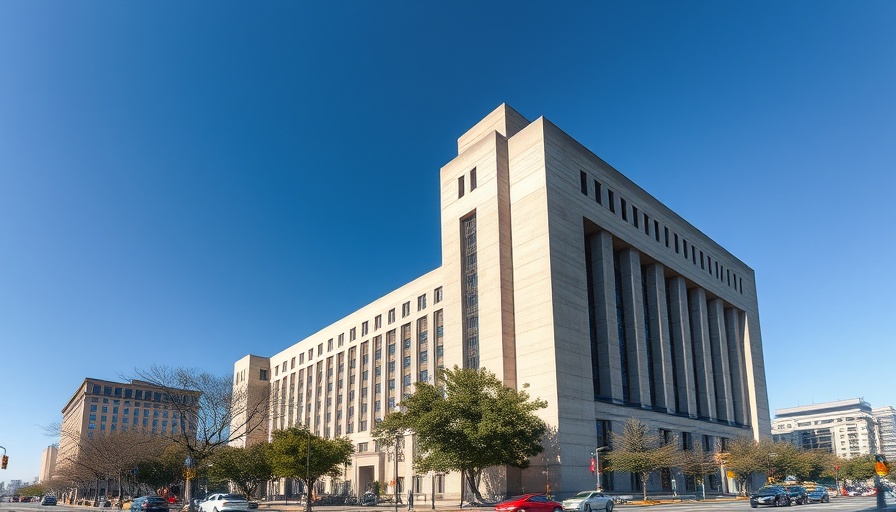
Unpacking the Push for Beautiful Architecture
Recently, President Donald Trump took a bold step by directing the General Services Administration (GSA) to enhance the aesthetics of federal buildings across the United States. This directive has reignited discussions about the role of architecture in public spaces, particularly how it can reflect civic pride and identity. The president’s memo emphasizes creating visually distinctive, beautiful federal buildings that align with traditional and classical architectural principles. This sentiment resonates deeply, especially as communities increasingly seek structures that embody their unique heritage.
A Historical Reflection on Architectural Design
Architecture is more than just a series of walls and roofs; it is a powerful expression of a society's values and aspirations. From the ornate facades of historic courthouses to the minimalist modernism of recent constructions, the design of government buildings sends a message about public service. Trump's memo notes the importance of respecting regional architectural styles, which suggests a desire to connect new constructions with local culture and history. This can be particularly beneficial in fostering a sense of belonging and community identification.
What Does 'Beautiful' Mean for Civic Architecture?
Defining what constitutes 'beauty' in civic architecture is subjective and often contentious. Critics argue that beauty must not compromise functionality. However, the notion of beauty is pivotal in making government structures feel more welcoming and accessible to the public. As these buildings often serve as hubs for community interaction, their aesthetics can greatly influence citizens' feelings of pride and connection to their government.
The Impact of Trump's Directive on Urban Development
This architectural initiative could create a ripple effect in urban planning and design across the nation. By prioritizing beauty in federal buildings, local governments may feel inspired or pressured to adopt similar approaches in municipal projects. This could lead to a more cohesive architectural landscape where each building contributes to the overall aesthetic experience of the community. Moreover, the memo sets a guideline that could influence funding decisions for numerous public projects, ensuring that beauty is a priority in municipal investments.
Current Responses from the Design Community
The American Institute of Architects (AIA) has expressed concerns regarding this move, particularly highlighting the risks of reverting to styles that may not align with contemporary needs or environmental standards. Critics fear that an emphasis on classical forms might limit innovative designs essential for sustainable and modern living. This ongoing dialogue among architects, urban planners, and policymakers highlights the need for comprehensive discussions that balance aesthetic appeal with practical considerations.
The Future of Federal Architecture: Balancing Past and Present
Looking ahead, the implementation of Trump's directive may create opportunities for incorporating both innovative practices and traditional values in federal architecture. The balance struck between these elements could establish a new benchmark for civic structures, influencing how future generations perceive their relationship with federal entities. As recommendations pour into the White House, the conversation surrounding beauty in civic architecture will likely evolve further, prompting both support and dissent from various quarters of society.
 Add Row
Add Row  Add
Add 




Write A Comment